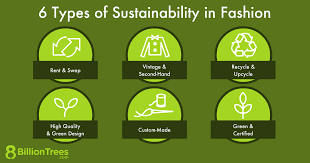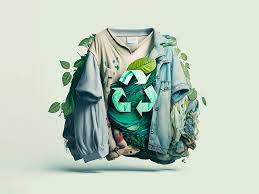Championing Sustainability: The Rise of Ethical Practices in Clothing Companies
Sustainable Clothing Companies: Leading the Way Towards a Greener Future
In recent years, the fashion industry has come under scrutiny for its environmental impact, prompting a shift towards sustainability. Many clothing companies are now embracing eco-friendly practices to reduce their carbon footprint and contribute to a greener future.
One of the key aspects of sustainable fashion is using environmentally friendly materials. Companies like Patagonia and EILEEN FISHER are leading the way by using organic cotton, recycled polyester, and other sustainable fabrics in their clothing lines. By opting for these materials, they not only reduce waste but also support ethical farming practices.
Another important factor in sustainable fashion is ethical production. Brands such as People Tree and Thought Clothing are committed to fair trade principles, ensuring that their garments are made in safe working conditions and that workers receive fair wages. By prioritising ethical production, these companies promote social responsibility within the industry.
Furthermore, some sustainable clothing companies take a circular approach to fashion by offering repair services or recycling programs for old garments. Companies like Reformation and Nudie Jeans encourage customers to return their worn-out clothes for recycling or upcycling, reducing textile waste and promoting a more circular economy.
As consumers become more conscious of the environmental impact of their purchases, the demand for sustainable clothing continues to grow. By supporting sustainable clothing companies, consumers can make a positive impact on the planet while still enjoying stylish and high-quality garments.
In conclusion, sustainable clothing companies play a crucial role in shaping the future of fashion towards a more environmentally friendly and socially responsible industry. By choosing to support these brands, consumers can contribute to a greener future while looking good and feeling good about their choices.
Top 9 Benefits of Choosing Sustainable Clothing Companies for a Greener Future
- Reduce environmental impact through the use of eco-friendly materials.
- Promote ethical production practices and fair wages for workers.
- Support sustainable farming methods by using organic cotton and other eco-friendly fabrics.
- Contribute to a circular economy by offering repair services or recycling programs for old garments.
- Raise awareness about the importance of sustainability in the fashion industry.
- Provide high-quality, durable clothing that lasts longer than fast fashion alternatives.
- Empower consumers to make environmentally conscious choices with their purchases.
- Encourage innovation in eco-friendly technologies and manufacturing processes.
- Inspire other companies to adopt sustainable practices and reduce their carbon footprint.
Challenges of Sustainable Clothing Companies: Higher Costs, Limited Styles, and Availability Issues
Reduce environmental impact through the use of eco-friendly materials.
Sustainable clothing companies effectively reduce their environmental impact by prioritising the use of eco-friendly materials in their production processes. By opting for organic cotton, recycled polyester, and other sustainable fabrics, these companies significantly decrease the demand for resource-intensive and polluting materials. This proactive approach not only minimises water usage and chemical pollution but also promotes biodiversity and supports ethical farming practices. Ultimately, the conscious choice of eco-friendly materials by sustainable clothing companies contributes to a healthier planet and a more sustainable fashion industry for future generations to enjoy.
Promote ethical production practices and fair wages for workers.
Sustainable clothing companies promote ethical production practices and ensure fair wages for workers, setting a higher standard for social responsibility within the fashion industry. By prioritising the well-being of their employees and ensuring safe working conditions, these companies not only uphold ethical values but also contribute to a more equitable and sustainable supply chain. Fair wages empower workers and support local communities, creating a positive impact that extends beyond the garments themselves.
Support sustainable farming methods by using organic cotton and other eco-friendly fabrics.
Sustainable clothing companies contribute to supporting sustainable farming methods by prioritising the use of organic cotton and other eco-friendly fabrics in their garments. By choosing organic cotton, these companies help reduce the environmental impact of traditional cotton farming, which often involves harmful pesticides and excessive water usage. Embracing eco-friendly fabrics not only benefits the environment but also promotes ethical farming practices, ensuring a healthier ecosystem for both farmers and wildlife. This commitment to sustainable sourcing sets a positive example for the fashion industry and encourages consumers to make more environmentally conscious choices when it comes to their clothing purchases.
Contribute to a circular economy by offering repair services or recycling programs for old garments.
Sustainable clothing companies contribute to a circular economy by offering repair services or recycling programs for old garments. By encouraging customers to repair or recycle their clothing, these companies help reduce textile waste and promote a more sustainable approach to fashion consumption. This proactive stance not only extends the lifespan of garments but also minimises the environmental impact of the fashion industry, making a positive contribution towards a greener future for our planet.
Raise awareness about the importance of sustainability in the fashion industry.
Sustainable clothing companies serve as powerful advocates for raising awareness about the importance of sustainability in the fashion industry. By championing eco-friendly practices and transparent supply chains, these companies not only set a positive example but also educate consumers about the environmental impact of their fashion choices. Through their efforts, sustainable clothing companies inspire a shift towards more conscious consumer behaviour, highlighting the significance of prioritising sustainability in every aspect of the fashion supply chain.
Provide high-quality, durable clothing that lasts longer than fast fashion alternatives.
Sustainable clothing companies excel in providing high-quality, durable garments that outlast fast fashion alternatives. By prioritising quality over quantity, these brands ensure that their clothing is made to withstand the test of time, offering customers long-lasting pieces that retain their shape and style even after multiple wears and washes. This commitment to durability not only reduces the need for frequent replacements but also promotes a more sustainable approach to fashion consumption, ultimately leading to a more environmentally friendly and economically sound wardrobe choice for consumers.
Empower consumers to make environmentally conscious choices with their purchases.
Sustainable clothing companies empower consumers to make environmentally conscious choices with their purchases by offering transparency about their production processes and materials. By educating customers about the impact of their buying decisions, these companies enable individuals to align their values with their shopping habits, fostering a sense of responsibility towards the environment. Through sustainable fashion options, consumers can actively contribute to reducing waste and supporting ethical practices within the industry, ultimately driving positive change towards a more sustainable future.
Encourage innovation in eco-friendly technologies and manufacturing processes.
Sustainable clothing companies play a vital role in encouraging innovation in eco-friendly technologies and manufacturing processes. By prioritising sustainability, these companies drive research and development towards more environmentally friendly practices, such as using recycled materials, reducing water consumption, and minimising waste. Through their commitment to eco-conscious innovation, sustainable clothing companies not only lead by example but also inspire the wider fashion industry to adopt greener technologies and processes for a more sustainable future.
Inspire other companies to adopt sustainable practices and reduce their carbon footprint.
Sustainable clothing companies serve as trailblazers in the fashion industry, inspiring other businesses to adopt eco-friendly practices and reduce their carbon footprint. By showcasing the feasibility and benefits of sustainable production methods, these companies set a positive example for the industry as a whole, encouraging others to follow suit in prioritising environmental responsibility. Through their leadership and commitment to sustainability, they pave the way for a greener future where ethical and eco-conscious practices are not just an option but a necessity for all businesses striving to make a positive impact on the planet.
Higher initial cost
One notable con of sustainable clothing companies is the higher initial cost associated with their products. By prioritising eco-friendly materials and ethical production practices, these companies incur higher production costs, which are then reflected in the retail prices for consumers. While the quality and sustainability of the garments justify these higher costs in the long run, the upfront investment required may deter some consumers who are accustomed to lower-priced fast fashion alternatives.
Limited style options
Some sustainable clothing companies prioritize environmental impact over trend-driven designs, leading to a potential con of limited style options for consumers. While mainstream fashion brands often offer a wide range of trendy and diverse designs, sustainable brands may focus more on eco-friendly materials and ethical production practices, sometimes resulting in a narrower selection of styles. This limitation in style options can pose a challenge for consumers who seek both sustainability and variety in their wardrobe choices, prompting them to strike a balance between supporting environmentally conscious brands and satisfying their fashion preferences.
Availability challenges
One significant con of sustainable clothing companies is the availability challenges they often face. Due to limited distribution channels and smaller production capacities, accessing products from these companies can be more challenging for consumers compared to shopping at larger fast-fashion retailers. This limitation may hinder the widespread adoption of sustainable fashion practices and make it harder for environmentally conscious consumers to find and purchase ethically made clothing options.

